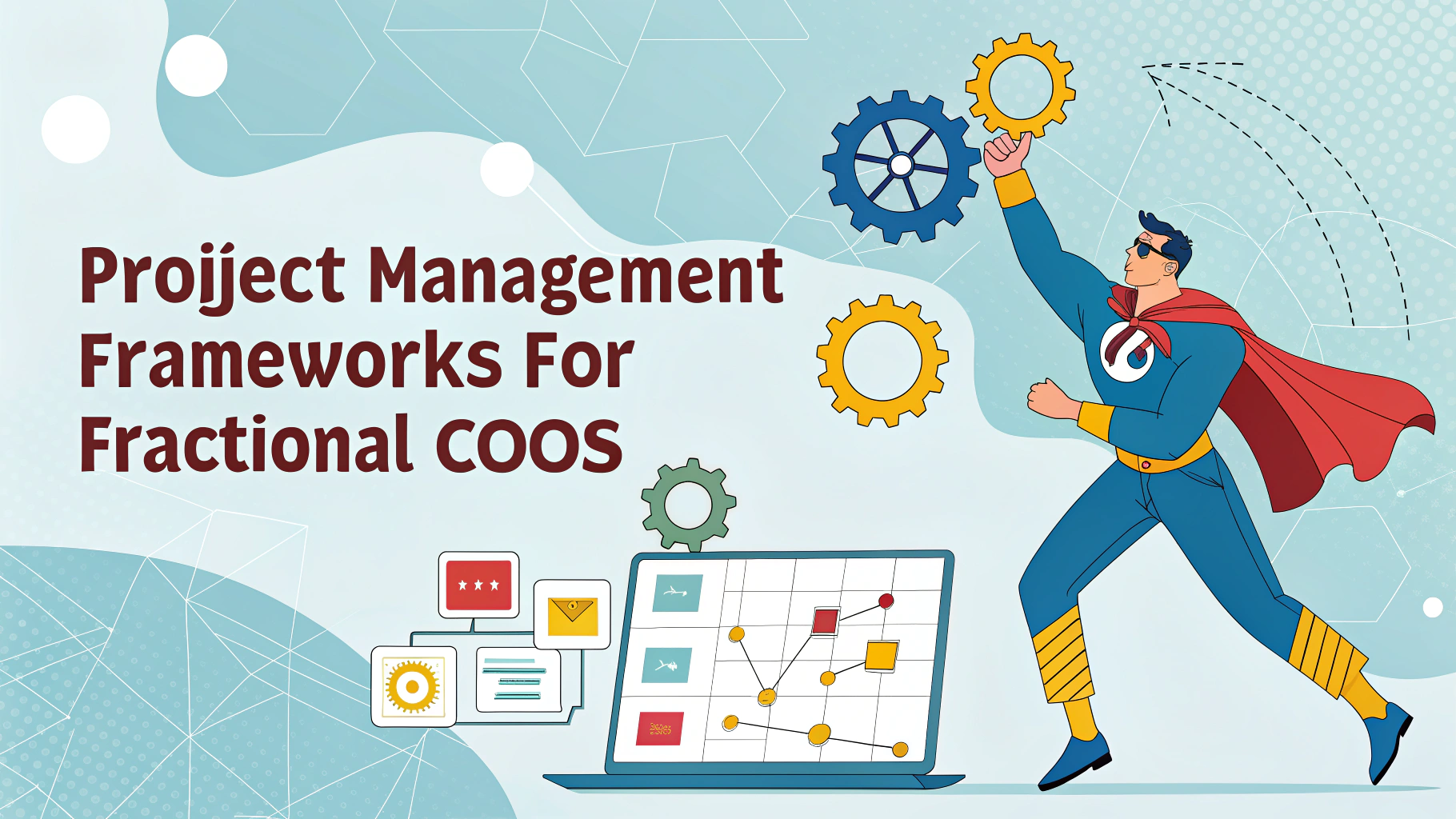Many growing businesses need high-level strategic leadership but can’t justify the cost of a full-time C-suite executive.
Beyond the traditional fractional COO role, several flexible executive solutions have emerged to help companies access top-tier talent without the overhead of full-time hires.
This guide explores alternative C-suite arrangements that can provide strategic guidance while maintaining cost efficiency and operational flexibility.
Key Alternative C-Suite Solutions
- Project-Based Executive Consultants
- Executive Advisory Boards
- Virtual C-Suite Teams
- Interim Executives
- Shared Executive Arrangements
Project-Based Executive Consultants
Project-based consultants step in for specific initiatives like system implementations, reorganizations, or market expansions.
Benefits:
- Specialized expertise for specific projects
- Clear deliverables and timelines
- No long-term commitment
- Fresh perspective on business challenges
Executive Advisory Boards
Advisory boards provide strategic guidance through regular meetings with experienced executives from various industries.
Structure Options:
- Monthly strategy sessions
- Quarterly business reviews
- On-call advisory support
- Industry-specific mentorship
Virtual C-Suite Teams
Remote executive teams work together to provide comprehensive leadership coverage across multiple business functions.
Common Arrangements:
| Role | Time Commitment | Focus Areas |
|---|---|---|
| Virtual CFO | 5-10 hours/month | Financial Strategy, Planning |
| Virtual CMO | 10-20 hours/month | Marketing Strategy, Brand Development |
| Virtual CTO | 8-15 hours/month | Technology Planning, Digital Strategy |
Interim Executives
Temporary executives fill leadership gaps during transitions, leaves of absence, or sudden departures.
Key Considerations:
- Clear handover process
- Defined transition period
- Knowledge transfer protocols
- Team communication plan
Shared Executive Arrangements
Multiple companies share the cost and time of a single executive through formal agreements.
Implementation Tips:
- Create clear scheduling protocols
- Define communication channels
- Establish conflict resolution procedures
- Set performance metrics
Selecting the Right Solution
Assessment Criteria:
- Business size and growth stage
- Budget constraints
- Industry complexity
- Required expertise level
- Timeline and urgency
Making Alternative C-Suite Solutions Work
Document processes and decisions to maintain continuity across different leadership arrangements.
Success Factors:
- Clear communication channels
- Regular performance reviews
- Defined decision-making authority
- Technology infrastructure for remote collaboration
Next Steps for Implementation
Begin by assessing your current leadership gaps and business objectives to determine which alternative C-suite solution aligns best with your needs.
Contact professional networks like CEOx or Vistage to connect with qualified executive talent.
Cost-Benefit Analysis
Understanding the financial implications of each alternative C-suite solution helps organizations make informed decisions about their executive leadership strategy.
Typical Investment Ranges:
- Project-Based Consultants: $10,000-50,000 per project
- Advisory Boards: $2,000-5,000 per month
- Virtual C-Suite: $5,000-15,000 per month
- Interim Executives: $15,000-30,000 per month
- Shared Executives: $8,000-20,000 per month
Risk Management Considerations
Alternative C-suite arrangements require specific risk mitigation strategies to protect company interests and ensure continuity.
Key Risk Areas:
- Intellectual property protection
- Data security measures
- Confidentiality agreements
- Performance guarantees
- Transition management
Building Long-Term Value
Alternative C-suite solutions can evolve with your organization’s growth and changing needs.
Strategic Benefits:
- Knowledge transfer to internal teams
- Development of future leaders
- Creation of scalable processes
- Access to diverse industry perspectives
Maximizing Executive Leadership Impact
The success of alternative C-suite arrangements depends on creating an environment that enables efficient decision-making and clear accountability while maintaining flexibility and cost-effectiveness.
Action Items:
- Develop clear objectives and success metrics
- Establish regular review cycles
- Create comprehensive onboarding processes
- Build strong communication frameworks
- Monitor and adjust arrangements as needed
FAQs
- What is a fractional COO?
A fractional COO is a part-time Chief Operating Officer who provides executive-level operational expertise to multiple organizations on a contract basis, typically working a predetermined number of hours per month for each client. - What are the alternatives to hiring a fractional COO?
Alternative solutions include hiring an operations director, working with business consultants, engaging interim executives, utilizing operational advisors, implementing project-based specialists, or employing multiple functional managers. - How do I know if my business needs a fractional COO or an alternative solution?
Evaluate your business needs based on company size, growth stage, operational complexity, budget constraints, and specific challenges. Consider whether you need ongoing operational leadership or focused expertise in particular areas. - What are the cost differences between a fractional COO and other C-suite alternatives?
Fractional COOs typically cost 30-50% less than full-time COOs. Alternative solutions like consultants or project-based specialists can be even more cost-effective, depending on scope and duration of engagement. - Can a business operations manager replace the need for a fractional COO?
Yes, in some cases. A business operations manager can handle day-to-day operational tasks but may lack the strategic expertise and executive-level experience that a fractional COO provides. - What are the key differences between a fractional COO and an operations consultant?
A fractional COO provides ongoing operational leadership and implementation, while consultants typically focus on specific projects or recommendations. Fractional COOs are more integrated into the business and accountable for results. - How long should I expect to work with a fractional COO versus other alternatives?
Fractional COO engagements typically last 6-24 months, while project-based consultants might work 3-6 months. The duration depends on business goals, complexity of operations, and desired outcomes. - What qualifications should I look for in alternative C-suite solutions?
Look for professionals with relevant industry experience, proven track record of success, strong leadership skills, specific expertise in your area of need, and ability to work within your organizational structure and culture. - How do reporting structures differ with various C-suite alternatives?
Fractional COOs typically report directly to the CEO, while other alternatives may report to different executives or work in advisory capacities without direct reporting lines. - What role does technology play in alternative C-suite solutions?
Technology can supplement or replace certain C-suite functions through automation, AI-powered analytics, project management tools, and operational software, potentially reducing the need for human leadership in specific areas.








